Pulp magazines were inexpensive fiction magazines that were published from 1896 to the late 1950s. The term "pulp" derives from the cheap wood pulp paper on which the magazines were printed. In contrast, magazines printed on higher-quality paper were called "glossies" or "slicks". The typical pulp magazine had 128 pages; it was 7 inches (18 cm) wide by 10 inches (25 cm) high, and 0.5 inches (1.3 cm) thick, with ragged, untrimmed edges.

The dime novel is a form of late 19th-century and early 20th-century U.S. popular fiction issued in series of inexpensive paperbound editions. The term dime novel has been used as a catchall term for several different but related forms, referring to story papers, five- and ten-cent weeklies, "thick book" reprints, and sometimes early pulp magazines. The term was used as a title as late as 1940, in the short-lived pulp magazine Western Dime Novels. In the modern age, the term dime novel has been used to refer to quickly written, lurid potboilers, usually as a pejorative to describe a sensationalized but superficial literary work.
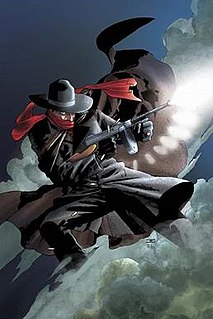
The Shadow is a fictional character created by magazine publishers Street & Smith and writer Walter B. Gibson. Originally created to be a mysterious radio show narrator, and developed into a distinct literary character in 1931 by writer Walter B. Gibson, The Shadow has been adapted into other forms of media, including American comic books, comic strips, television, serials, video games, and at least five feature films. The radio drama include episodes voiced by Orson Welles.
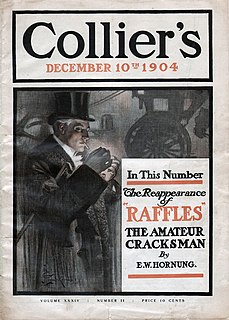
A. J. Raffles is a British fictional character – a cricketer and gentleman thief – created by E. W. Hornung. Between 1898 and 1909, Hornung wrote a series of 26 short stories, two plays, and a novel about Raffles and his fictional chronicler, Harry "Bunny" Manders.
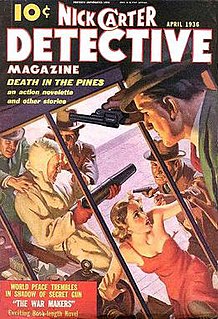
Nick Carter is a fictional character who began as a dime novel private detective in 1886 and has appeared in a variety of formats over more than a century. The character was first conceived by Ormond G. Smith and created by John R. Coryell. Carter headlined his own magazine for years, and was then part of a long-running series of novels from 1964 to 1990. Films were created based on Carter in France, Czechoslovakia and Hollywood. Nick Carter has also appeared in many comic books and in radio programs.
Nick Carter is an Italian comic strip created in 1972 as a semi-animated cartoon, for Gulp!, one of the most popular Italian TV shows of that decade. The creators were Guido De Maria, as director and writer, and Franco Bonvicini ("Bonvi"), as co-writer and artist. The first run comprised 11 stories, later reissued, as print comic strips for Il Corriere dei Ragazzi, and then in numerous other magazines and books.

The Phantom Detective was the second pulp hero magazine published, after The Shadow. The first issue was released in February 1933, a month before Doc Savage, which was released in March 1933. The title continued to be released until 1953, with a total 170 issues. This is the third highest number of issues for a character pulp, after The Shadow, which had 325 issues, and Doc Savage, which had 181. In western titles, Texas Rangers would have around 212 issues of their main character, known as the Lone Wolf.
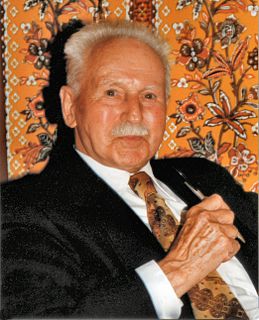
Edgar Hoffmann Price was an American writer of popular fiction for the pulp magazine marketplace. He collaborated with H. P. Lovecraft on "Through the Gates of the Silver Key".
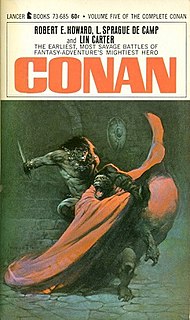
Conan is a 1967 collection of seven fantasy short stories and associated pieces written by Robert E. Howard, L. Sprague de Camp and Lin Carter featuring Howard's seminal sword and sorcery hero Conan the Barbarian. Most of the stories were originally published in various pulp magazines. The book was first published in paperback by Lancer Books in 1967, and was reprinted in 1968, 1969, 1970, 1971, 1972 (twice) and 1973. After the bankruptcy of Lancer, publication was taken over by Ace Books. Its first edition appeared in May 1977, and was reprinted in 1979, 1982 (twice), 1983, 1984, 1985, 1986, and 1990. The first British edition was issued by Sphere Books in 1974, and was reprinted in 1977. The book has also been translated into German, Japanese, French, Spanish, Italian, Swedish and Dutch. It was gathered together with Conan of Cimmeria and Conan the Freebooter into the omnibus collection The Conan Chronicles.
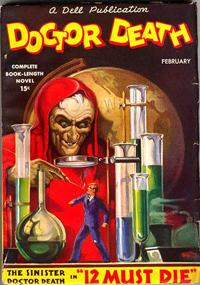
Doctor Death was the title of a short-lived pulp science fiction magazine published by Dell Magazines in 1935, as well as the name of the main character featured in that magazine. Doctor Death was an archcriminal who wanted to return the world to a primitive condition and used supernatural tools such as zombies and magic in his plots against humanity. The stories were written by Harold Ward under the pseudonym of "Zorro". Dell may have intended Doctor Death to be a continuation of a character of the same name in All Detective Magazine, also published by Dell.

Detective Story Magazine was an American magazine published by Street & Smith from October 15, 1915, to Summer, 1949. It was one of the first pulp magazines devoted to detective fiction and consisted of short stories and serials. While the publication was the publishing house's first detective-fiction pulp magazine in a format resembling a modern paperback, Street & Smith had only recently ceased publication of the dime-novel series Nick Carter Weekly, which concerned the adventures of a young detective.

"The Criminologists' Club" is a short story by E. W. Hornung, and features the gentleman thief A. J. Raffles, and his companion and biographer, Bunny Manders. The story was published in March 1905 by Collier's Weekly in New York, and in April 1905 by Pall Mall Magazine in London. It was also included as the fourth story in the collection A Thief in the Night, published by Chatto & Windus in London, and Charles Scribner's Sons in New York, both in 1905.
The Return of A. J. Raffles, first produced and published in 1975, is an Edwardian comedy play in three acts, written by Graham Greene and based somewhat loosely on E. W. Hornung's characters in The Amateur Cracksman. Set in the late summer of the year 1900, the story revolves around the infamous burglar and cricketer, A. J. Raffles—presumed dead in the Boer War—who returns to Albany where, with his friends Bunny and Lord Alfred Douglas, he plots to rob the Marquess of Queensberry, partly for the money and partly for revenge against the Marquess for his treatment of their friend Oscar Wilde. The robbery takes place at the Marquess' house in Hertfordshire, where Raffles and Bunny are interrupted by the Prince of Wales and a Scotland Yard detective, who discover the Prince's personal letters have also been stolen.
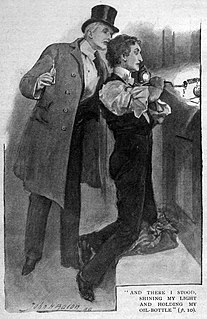
Arthur J. Raffles is a fictional character created in 1898 by E. W. Hornung, brother-in-law of Sir Arthur Conan Doyle, the creator of Sherlock Holmes. Raffles is, in many ways, an inversion of Holmes – he is a "gentleman thief", living at the Albany, a prestigious address in London, playing cricket as a gentleman for the Gentlemen of England and supporting himself by carrying out ingenious burglaries. He is called the "Amateur Cracksman" and often, at first, differentiates between him and the "professors" – professional criminals from the lower classes.
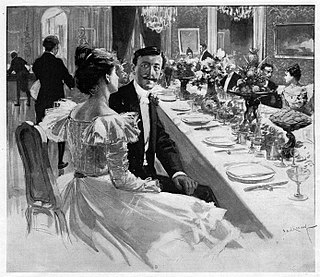
"Gentlemen and Players" is a short story by E. W. Hornung, and features the gentleman thief A. J. Raffles, and his companion and biographer, Bunny Manders. The story was first published in August 1898 by Cassell's Magazine. The story was also included in the collection The Amateur Cracksman, published by Methuen & Co. Ltd in London, and Charles Scribner's Sons in New York, both in 1899.
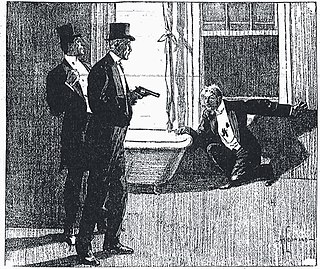
"Wilful Murder" is a short story by E. W. Hornung, and features the gentleman thief A. J. Raffles, and his companion and biographer, Bunny Manders. The story was first published as the fifth part of the collection The Amateur Cracksman, published by Methuen & Co. Ltd in London, and Charles Scribner's Sons in New York, both in 1899. This and "Le Premier Pas" were the two stories in the collection not published previously in magazine format.
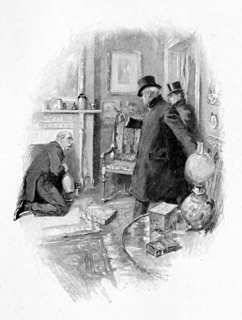
"To Catch a Thief" is a short story by E. W. Hornung, and features the gentleman thief A. J. Raffles, and his companion and biographer, Bunny Manders. The story was first published in Scribner's Magazine in May 1901. The story was also included as the fifth story in the collection The Black Mask, published by Grant Richards in London, and Charles Scribner's Sons in New York, both in 1901.
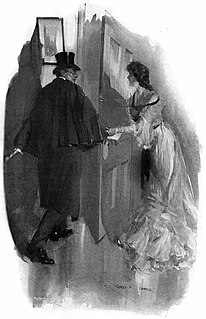
"Out of Paradise" is a short story by E. W. Hornung, and features the gentleman thief A. J. Raffles, and his companion and biographer, Bunny Manders. The story was first published in December 1904 by Collier's Weekly in New York, and in January 1905 by Pall Mall Magazine in London. The story was also included as the first story in the collection A Thief in the Night, published by Chatto & Windus in London, and Charles Scribner's Sons in New York, both in 1905.
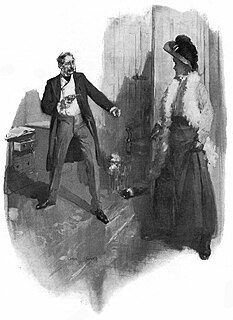
"The Rest Cure" is a short story by E. W. Hornung, and features the gentleman thief A. J. Raffles, and his companion and biographer, Bunny Manders. The story was published in February 1905 by Collier's Weekly in New York and in March 1905 by Pall Mall Magazine in London. The story was also included as the third story in the collection A Thief in the Night, published by Chatto & Windus in London, and Charles Scribner's Sons in New York, both in 1905.

Raffles is a British radio programme including eighteen episodes that first aired on BBC Radio 4 from 1985 to 1992, and an additional radio play that aired in 1993 on the BBC World Service. The series was directed by Gordon House and was based on the A. J. Raffles stories by author E. W. Hornung.

















